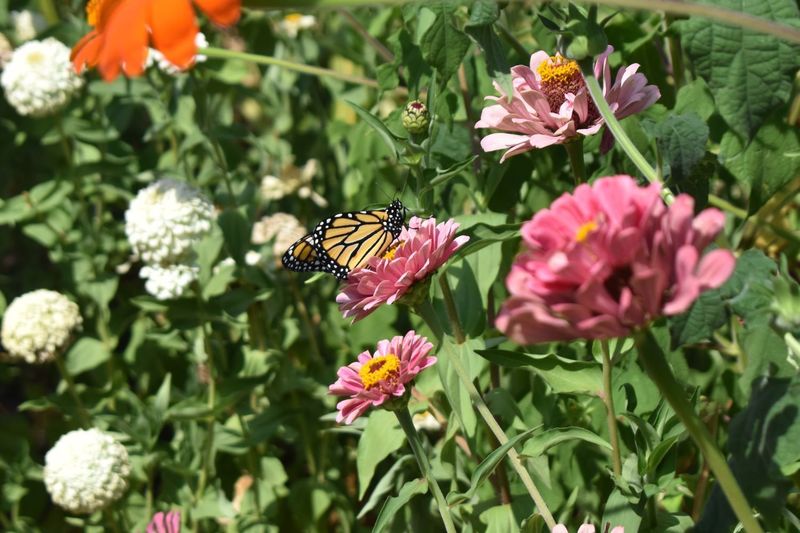Students in Mrs. Guappone's third-grade class at North Elementary recently released three adult monarch butterflies in the flower garden area on the south side of the building. The release is part of a class science project.
"I've been collecting eggs and caterpillars all of August,” Mrs. Guappone said. “A friend has a passion for saving the monarchs, and she came to visit the lake this summer, with her caterpillars and chrysalis in a terrarium. I became very interested and instantly thought how much fun the students would have with this.”
The Monarchs lay their eggs on milkweed, and they hatch in about three to four days. Guappone spent hours searching milkweed for eggs and caterpillars, then transferred them to the terrarium. From the time the caterpillars emerge from their eggs, all they do is eat milkweed constantly as it is their only food source. In approximately two weeks, after molting three to four times, they will climb to the top of the terrarium and "j-hook", molt for the final time, and then the chrysalis is formed. In roughly seven to 10 days, the chrysalis begins to darken, and you can make out the orange and black markings of the Monarch. After it emerges from the chrysalis, it will be ready to fly in about three hours. They need to be released within 24 hours, at which time they will begin their journey to Mexico.
“The kids love it and are very excited by the whole process which is so fun to see,” she said. “They do check on them as soon as they come into the classroom, and they are constantly watching for activity. We have been lucky to see them emerge from the chrysalis several times, and then the countdown begins to when we can go outside to release them.”
The survival rate of Monarchs in the wild is roughly 1%. If they are raised in a terrarium that number increases to 95%. To date, her class has released 27 butterflies.
“This will be a yearly passion project from here on out,” Mrs. Guappone said. “The life cycle of the Monarch is amazing, and having been able to watch it through all the stages has simply been an incredible experience. Seeing the joy and amazement on the kids' faces has been so much fun and a great way to start the school year.
“Hopefully, they will carry it in their hearts and minds and continue to want to learn more about the natural world around them. Who knows, maybe a seed will be planted and a future lepidopterist will come from St. Peter,” she added.
For more photos of the butterfly release see below.




